Pilot errors led to Shoreham air crash, says AAIB
- Published
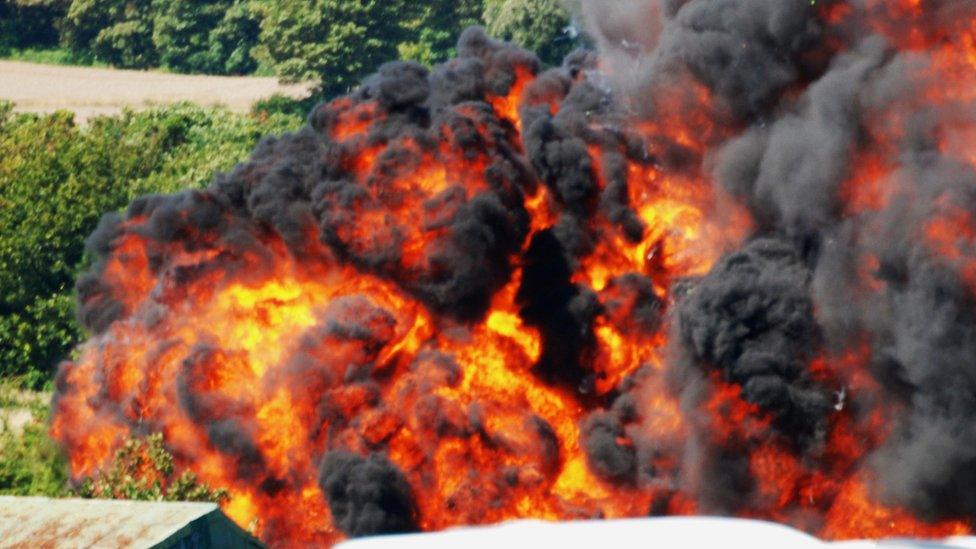
The jet crashed on to the busy A27 and burst into flames
A jet crashed on a major road killing 11 men in a fireball because it was too low to perform an aerobatic manoeuvre, investigators have found.
The Hawker Hunter jet crashed on the A27 in Sussex during the Shoreham Air Show on 22 August 2015.
A further 13 people, including the pilot Andy Hill, were injured.
In its final report on the disaster, the Air Accidents Investigation Branch (AAIB) listed a series of failings, external including poor risk assessments.
Mr Hill, 52, from Hertfordshire, has been the subject of a manslaughter investigation by Sussex Police and was interviewed under caution.
'A fireball headed towards us at 400mph'
Live updates: Shoreham air disaster report
On publication of the report into the disaster, AAIB principal inspector Julian Firth said: "The aircraft crashed because at the top of its aerobatic manoeuvre it was too low to complete it."
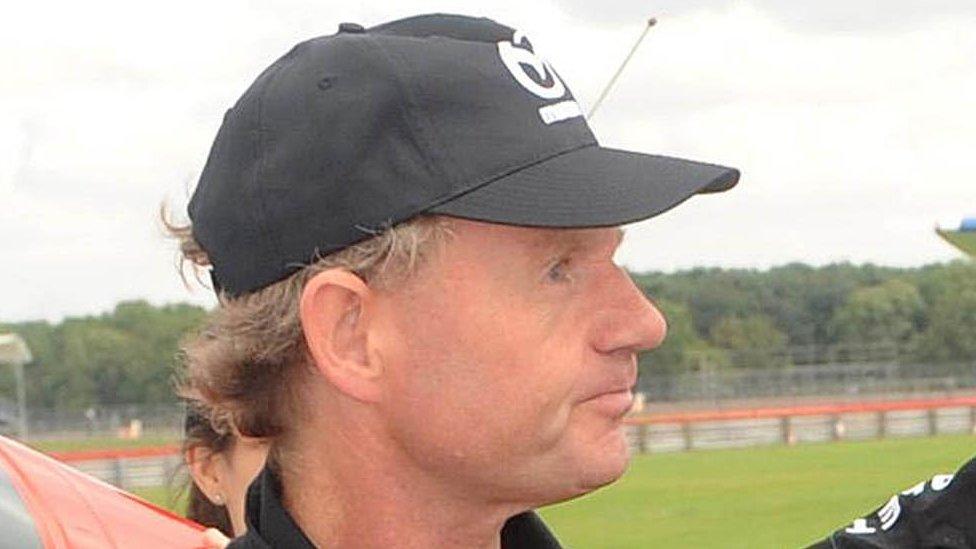
Pilot Andy Hill survived the crash
The parents of victim Matthew Grimstone, 23, said: "Apart from anything that the pilot may have got wrong it is very evident the Civil Aviation Authority (CAA) and the Shoreham Air Show organisers have got much to answer for.
"Rules laid down by the CAA were quite clearly inadequate and those that were there were, in some cases, not fully adhered to by the air show organisers."
Caroline Schilt, the mother of Jacob Schilt, who died along with fellow Worthing United player Mr Grimstone as they travelled in a car to a game, said she was happy with the AAIB's investigation, but there would still be unanswered questions until the inquests were held.
"The AAIB has given us as a very comprehensive and factual report of their investigation... but there are still questions and they are ones for the coroner, and she is still waiting for all the inquiries to finish before she can go further."
A new date has now been set for the rescheduled pre-inquest review into the deaths.
It will take place on 20 June at the West Sussex Coroner's Court, in Crawley, but no evidence will be heard.
Oliver Morriss said his family would like to see those responsible for the disaster brought to justice
The organisers of the airshow said the report "clearly confirms that a series of errors by an experienced and fully authorised pilot were the cause of the tragic crash".
The AAIB criticised risk assessments which did not adequately protect people in areas "outside the control of the organisers", but Shoreham chiefs claimed they had "always worked hard to ensure the event was both safe and successful".
"Our main aim in 2015 was to do just that, but there are findings in the report that will require further analysis and reflection.
"The report also contains important recommendations for the CAA, as well as the wider airshow industry, and these must be noted carefully," they said.
'Escape manoeuvre'
The report said the pilot carried out the manoeuvre at less than maximum thrust.
It would have been possible to abort it safely at the apex of the loop but Mr Hill had not been trained in the escape manoeuvre which might have got him out of trouble.

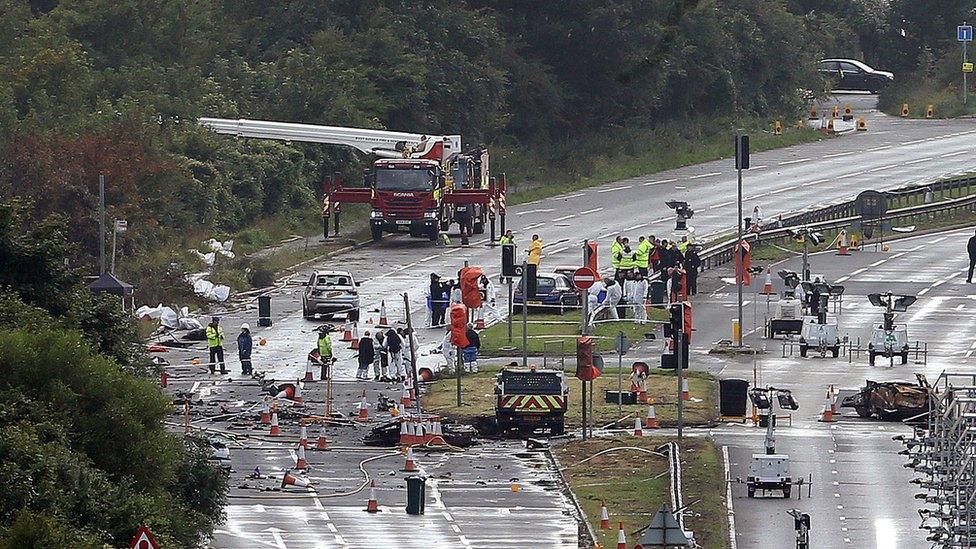
Eleven men were killed and a further 13 people, including the pilot, were injured
The AAIB also found the severity of the outcome of the crash was due to "an absence of provisions to mitigate the effects of an aircraft crashing in an area outside the control of the organisers of the flying display".
The report said the risk assessment "was not suitable and sufficient to manage the risks to the public", and the Civil Aviation Authority (CAA) did not require to see or approve risk assessments before issuing a permission to hold a flying display.
The AAIB made 31 safety recommendations for the CAA and one for the government.
Ten are in the final report, including that airshow organisers must conduct suitable and sufficient risk assessments, and pilots must tell organisers what manoeuvres they will carry out and where.
The AAIB also recommends that pilots should be trained in escape manoeuvres, and that displaying aircraft are separated from the public by a sufficient distance to minimise risk of injury to the public.
It also recommends that the Department for Transport commission, and report the findings of, "an independent review of the governance of flying display activity to determine the form of governance that will achieve the level of safety it requires".
The CAA said it had acted on 21 recommendations and would action the other 10 as a priority.

Analysis
Richard Westcott, transport correspondent
Investigators interviewed the Shoreham pilot several times but critically, he can't remember anything about the accident.
They say his flight helmet had dents in so it's possible he hit his head.
What that means is that, although they know the aircraft was flying too low and too slow, and that the engine wasn't at full power when it should have been, they can only speculate as to why.
One possible explanation they've looked at is whether the pilot got confused with another jet aircraft, called a Jet Provost, which he normally flies.
The height and speed he started the Shoreham manoeuvre would be right for the Jet Provost, because it is smaller and lighter than the Hunter.
Aviation specialists have suggested that he may have got the planes muddled up. But it's unlikely that we will ever know for sure.

Sussex Police said it would be looking at the AAIB report in detail with its independent experts.
Det Ch Insp Paul Rymarz said: "We have been waiting some time for this report and it will take us some time to review.
"We hope to do everything we can to submit a file of material to the CPS in advance of the pre-inquest review on 20 June.
"As we have said before, this is an extraordinarily complex investigation, but we remain committed to finding answers for the families and friends of those who died."
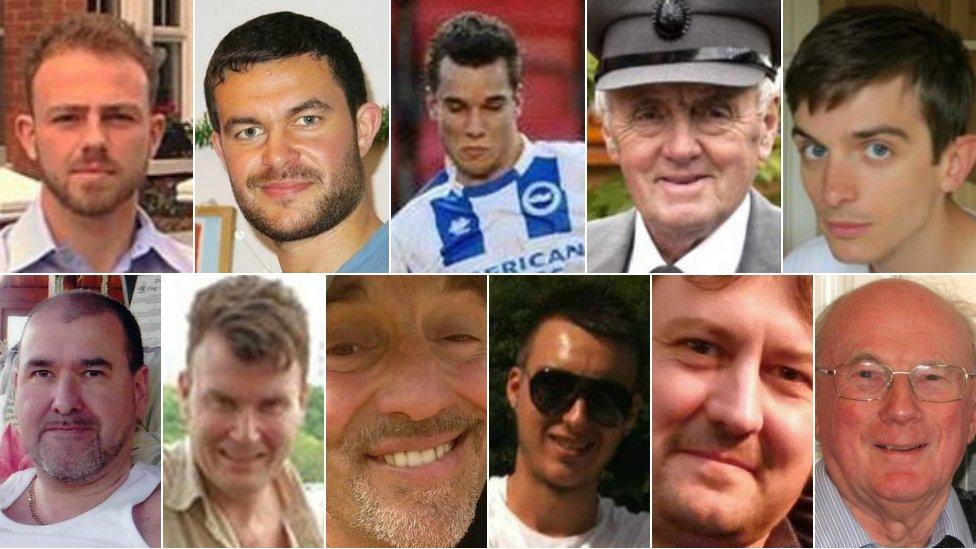
(Top row, left to right) Matt Jones, Matthew Grimstone, Jacob Schilt, Maurice Abrahams, Richard Smith. (Bottom row, left to right) Mark Reeves, Tony Brightwell, Mark Tussler, Daniele Polito, Dylan Archer, Graham Mallinson
Both the AAIB and CAA have already published a series of interim reports looking at the findings from the crash scene and implications for air displays around the UK
An AAIB report in September 2015 found the jet showed "no abnormal indications" during its flight.
But a further report in December said the aircraft had expired ejector seat parts and an out-of-date technical manual.
In March last year, the AAIB said organisers of the Shoreham air show were unaware of the pilot's display plans.
Safety measures at all UK civil air shows were enhanced following the disaster and the CAA said it had reviewed every aspect of air display safety.

The victims
Mark Sanderson says he will always remember Jacob Schilt and Matt Grimstone as great footballers
Matt Jones, 24 - a personal trainer
Daniele Polito, 23 - he was travelling in the same car as Mr Jones
Matthew Grimstone, 23 - a Worthing United footballer who worked as a groundsman at Brighton & Hove Albion
Jacob Schilt, 23 - a Worthing United player travelling to a match with Mr Grimstone
Maurice Abrahams, 76 - a chauffeur on his way to pick up a bride on her wedding day
Richard Smith, 26, and Dylan Archer, 42 - friends who were going for a bike ride on the South Downs
Mark Reeves, 53 - he had taken his motorcycle to the perimeter of Shoreham Airport to take photos of the planes
Tony Brightwell, 53, - an aircraft enthusiast who had learned to fly at Shoreham airfield
Mark Trussler, 54 - thought to have been riding his motorcycle on the A27
Graham Mallinson, 72 - a keen photographer and retired engineer

- Published2 March 2017

- Published24 January 2017
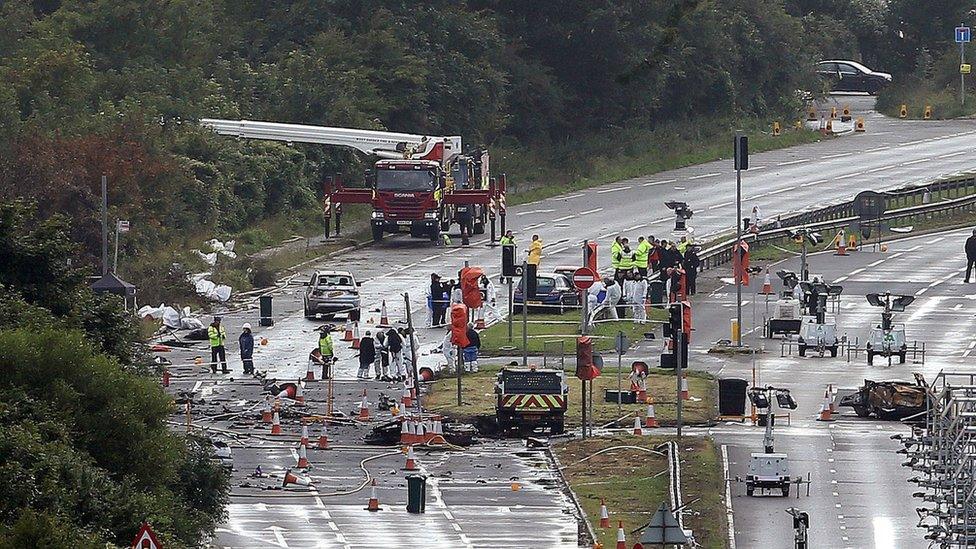
- Published30 November 2016
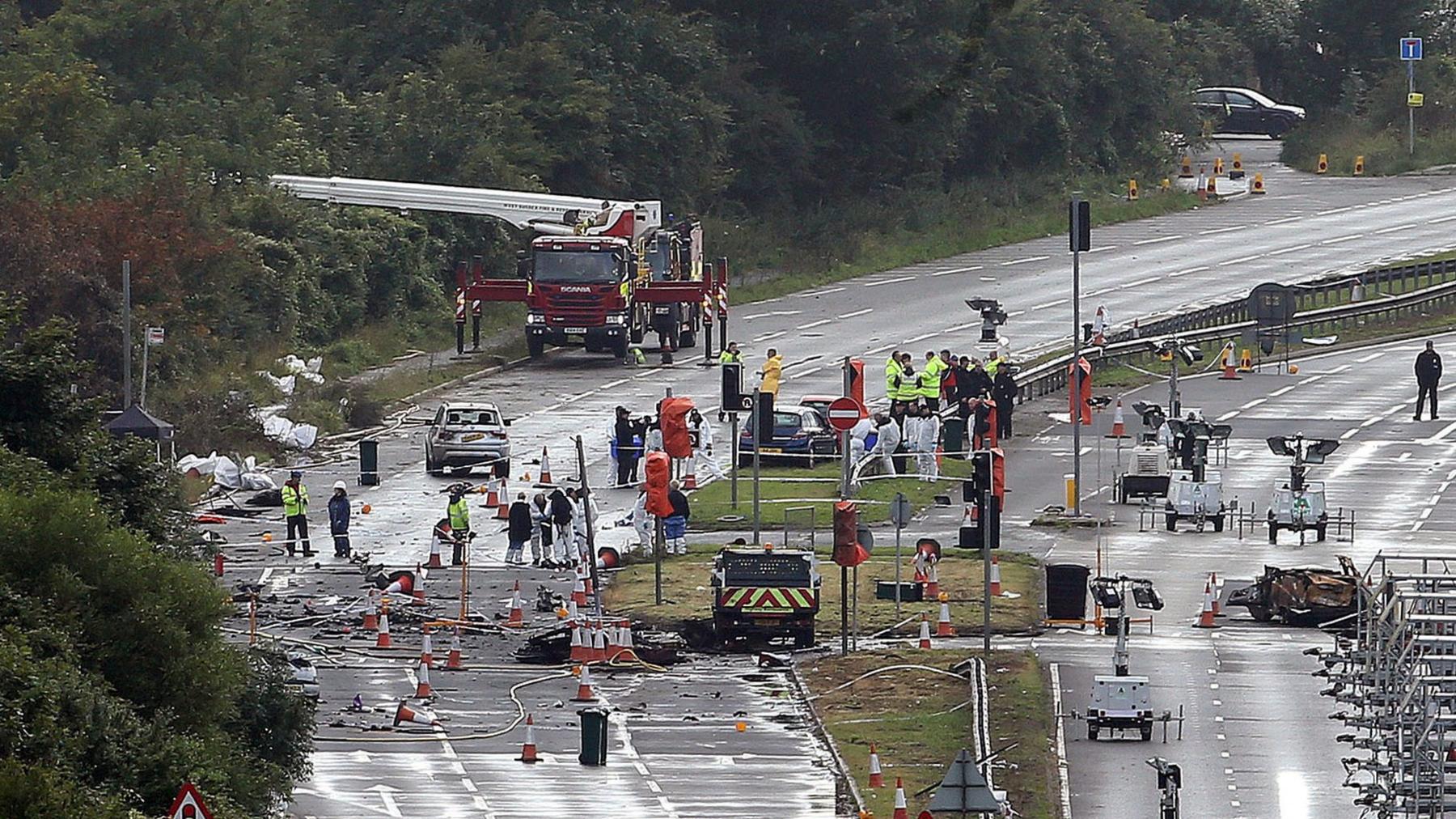
- Published28 September 2016

- Published22 August 2016

- Published21 August 2016
